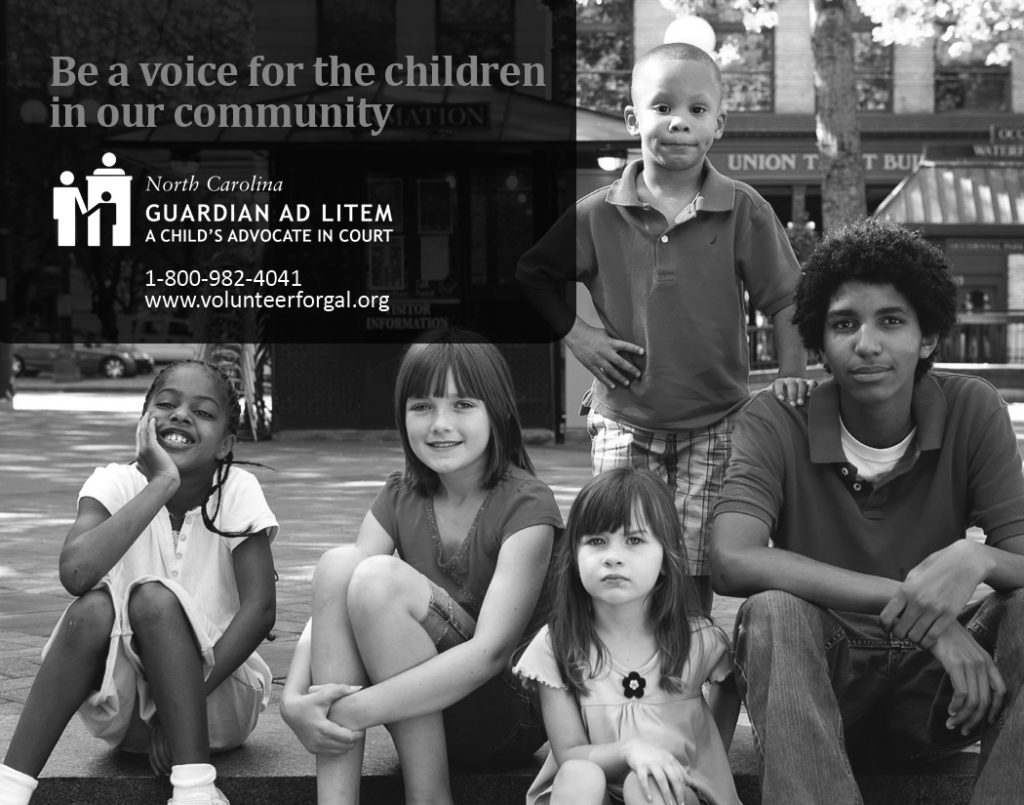by Jennifer Nehlsen •
Guardians ad litem serve as the voice of the abused and neglected children in their community while the court works to determine the most appropriate permanent plan. Guardians ad litem (GALs) should have direct and sufficient contact with the child-client to carry out an independent and valid investigation of the child-client’s circumstances and to know the child-client’s expressed wishes. This level of contact (typically monthly) allows the GAL to make sound, thorough, and objective recommendations in the child-client’s best interests. In-person visits with the child-client have traditionally been considered best practice.
Since COVID-19 struck, North Carolina’s GAL program has had to re-examine how visits could be done while keeping child-clients, volunteers, and staff safe. Starting March 16, 2020, in-person contact between volunteers and child-clients was suspended by the state’s GAL Administrator. Volunteers were coached by staff to find alternate methods to remain in contact with their child-clients.
“The most important thing is just making sure the children know I’m here for them. I’ll be a constant in their lives through this unfamiliar time.” —GAL volunteer
Since March, volunteers have used phone calls, FaceTime, Zoom, Google Duo, letter-writing, and other methods to fulfill their requirement to have direct and sufficient contact with their child-clients. Starting at the beginning of August 2020, GAL District Administrators were given the ability to approve volunteer requests to perform in-person visits as long as the decision took into account designated risk-assessment, health and safety protocol, and supervision requirements.
Virtual Visitation: A Mixed Experience
GAL staff were recently asked to share their impressions of how the shift from in-person to virtual visitation has gone. There has not been one consistent experience. As the following shows, it differed district to district, GAL volunteer to GAL volunteer:
- Some report they have more contact with their child-clients since instituting virtual visits.
- Some report the quality of the visits has been diminished, especially with younger children.
- Some say it has been difficult to establish rapport if no in-person visits had taken place before COVID hit.
- Many expressed concern that they can’t tell whether someone is off-screen preventing the child-client from talking freely during the virtual visit.
- Volunteers who never used technology said they learned to adapt for the benefit of their child-clients.
- Some report that working with the placement provider to figure out the best method for virtual visits has been tricky.
- Limited internet access has posed an access problem in large swaths of the state.
- Without the limitations placed on a volunteer’s time for travel, some volunteers have been able to take on multiple child-clients, which has been a plus for districts with unassigned caseloads.
- Staff no longer need to request a courtesy volunteer from another county if a child-client has been moved—the original GAL can maintain their relationship with the child-client virtually.
Necessity Sparks Creativity
All volunteers report a need to be much more creative in their efforts to plan and participate in virtual visits. Here are some of the creative methods volunteers used to connect with child-clients:
- Bringing their pets onto the screen during a virtual visit to show the child
- Playing games together like 20 Questions, MadLibs, and Simon Says
- Asking the child to bring their favorite toy or book on the virtual call
- Drawing pictures together
- Bringing their device on a walk through their yard or garden
- Adding stickers and changing frames in Facetime
- Reading books together
- Cooking lessons for teens
- Having the placement provider hold the phone so a child can demonstrate a new skill
- Sharing knock-knock jokes
- And my personal favorite, creating a video of the volunteer’s pet with the volunteer’s voice inserted into the video to make it look like the pet was talking to the child.
Virtual visits have been a mixed experience for GALs and their child-clients across the state. The vast majority recognize that the work of GAL has not changed, just the way the work needs to be undertaken. All look forward to being able to see their child-clients in-person again when it is safe to do so. Interestingly, many volunteers intend to continue using virtual technology options to supplement in-person visits.
Allison Hall, a volunteer in District 10 since 2016, captured what most staff and volunteers are feeling, “For me, the most important thing of all is just making sure the children know I’m here for them. I’ll be a constant in their lives through this unfamiliar time and they can count on me to be a source of support.”
Jennifer Nehlsen is the Guardian ad Litem Regional Administrator for NC’s 26 western counties. Jennifer leads a staff of 44 who recruit, train, and support 1,200 volunteers to serve as the voice for 3,200 abused and neglected children in this region. To learn more about Guardian ad Litem, visit www.volunteerforgal.org.



